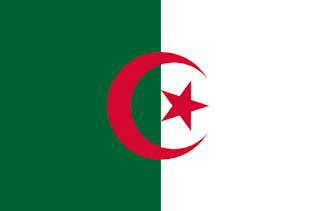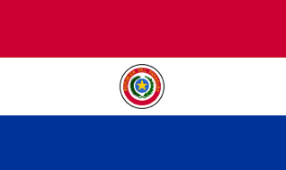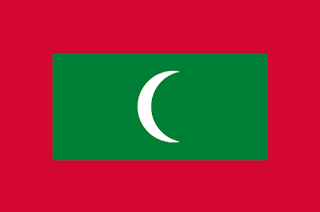FACTS ABOUT VENEZUELA
AMAZING
FACTS ABOUT VENEZUELA
1. Venezuela is officially called the “Bolivarian
Republic of Venezuela.”
2. Venezuela is blessed with magnificent,
diverse geography. It has Caribbean islands, rivers, marshlands, mountains,
glaciers, highlands, grasslands (los llanos), deserts, canyons, mesas, forests,
and jungles.
3. Caracas is the capital city of
Venezuela.
4. The total population of Venezuela is 31,304,016.
5.
The natives of Venezuela are called
Venezuelans.
6.
The Venezuelan bolivar is the official currency of
Venezuela.
7.
Venezuela shares a border with Colombia, Brazil and
Guyana.
8.
The country’s habitats range from the Andes Mountains
(west) to the Amazon Basin rainforest (south) to the Caribbean coast (north)
via the extensive llanos plains (central) to the Orinoco River Delta (east).
9.
The northern edge of the Amazon Basin is in the southern
part of Venezuela.
10.
Venezuelan president ordered the women in the country to
abstain from using hair dryers because of the shortage of electricity in the
country. The country was on the verge of a total power outage in April, 2016.
11.
Christopher Columbus is the first European to find the
country.
12.
In Venezuela, mothers have to carry their children’s
birth certificate for buying diapers and other baby products.
13.
Sometimes, Venezuelan police have to hire security for
themselves as many police officers have been killed while doing their duty.
14.
Coke Zero was banned in Venezuela in 2009.
15.
The Venezuelan people enjoy the cheapest gasoline
(petrol) in the world since the government subsidizes their oil industry. At a
penny a liter, you can literally fill your tank with the small change from your
pocket. Oil is cheaper that water in Venezuela and Saudi Arabia.
16.
In Venezuela, children have the option to choose the
timing of their school. They can choose to attend school in the morning,
afternoon or at night.
17.
Venezuela abolished slavery in 1854, freeing
approximately 25,000 slaves, three percent of the population at that time.
18.
The largest lake in South America is located in
Venezuela. Lake Maracaibo, at 20 to 40 million years old, is also one of
the oldest lakes on earth.
19.
Catatumbo lightning is a meteorological phenomena that
only occurs at the mouth of the Catatumbo River where it joins Lake Maracabio.
For up to 160 days a year, lightning strikes the lake repeatedly for up
to ten hours at a time in the evening.
20.
Entirely located in the tropics, the country has two
types of seasonal weather: the hot-humid season and the hot-dry season. The
difference is the amount of rain received during the season.
21.
Venezuela is one of the 17 most biodiverse countries on
the planet.
22.
The scrublands, mangrove and cloud forests, and
rainforests are especially rich in biodiversity.
23.
Venezuela is one of the top 20 countries in the world
whose animals and plants are endemic (unique) to the country.
24.
Fifty percent of the amphibians and 23 percent of the
reptiles are unique to Venezuela. Thirty-eight percent of the plant species and
48 percent of the birds are.
25.
Venezuela’s cloud forests are home to over 25,000 species
of orchids including the ‘flor de mayo’, the country’s national flower.
26.
Over 3,900 species of fungi have been discovered and
recorded from Venezuela.
27.
Venezuelan animal life includes three-toed and two-toed
sloths, Amazon River dolphins, Orinoco crocodiles (which grow up to 22ft/6.6 m
in length), giant anteaters, jaguars, and capybaras.
28.
More than half of all the mammal and bird species of
Venezuela are found in the Amazon forests south of the Orinoco River basin
including the troupial, Venezuela’s national bird.
29.
Venezuela has 43 national parks and up to 33 percent of
its forested land is protected.
30.
In 1497 on his third voyage to the Americas, Christopher
Columbus sailed to the Orinoco Delta and declared he had found “Heaven on
Earth”. He named this region “Land of Grace” and that remains the
country’s nickname today.
31.
In 1499 Alonso de Ojeda’s expedition visited the
country’s coast and discovered the stilt houses around Lake Maracaibo. Because
they reminded his navigator Amerigo Vespucci of the city of Venice, he named
the region Veneziola (“Little Venice”).
32.
The territory was colonized by Spain in 1522. It became
one of the first Spanish-American colonies to declare independence in 1811 and
finally gained it in 1821 under Simón Bolívar as part of Gran Columbia.
33.
In 1830 the country broke away from Colombia to become an
independent republic. Páez became the first president.
34.
From 1830 until democracy was restored in 1958, Venezuela
experienced revolutions, dictatorships, counter-revolutions and military
juntas.
35.
Hugo Chavez attempted two coups in 1992 and was
imprisoned when both failed.
36.
Chavez was elected president by a landslide in December
1998 and immediately began to bypass the Congress and constitution in order to
control the economy and extend his term.
37.
In 2000 Chavez was re-elected in another landslide and
more turmoil began with coup attempts, general strikes, a recall attempt, and
sanctions from other countries. He was re-elected in 2006 and again in 2012 but
died in office in March 2013.
38.
President Nicolas Madura expelled U.S. diplomats in
September 2013. U. S. President Obama placed sanctions on Venezuela and
labeled them a national security threat in March of 2015.
39.
Venezuela is one of the most urban countries in Latin
America. Its capital is the city of Caracas.
40.
Local currency is the Bolivar Fuerte. Once you change
your money to this currency, you can’t change it back to dollars or euros so be
aware of this and plan accordingly.
41.
Since the discovery of massive oil deposits in the Lake
Maracaibo area during the early 20th century, Venezuela has been one of the
world’s leading oil exporters.
42.
Venezuela has the world’s largest oil reserves and is a
founding member of OPEC.
43.
The country consistently ranks among the world’s top ten
crude oil producers and has the eighth largest natural gas reserves.
44.
The petroleum sector is the major economic force and
accounts for approximately 80% of their exports. Price controls begun under
Chavez and continued under President Maduro have caused rampant shortages of
basic supplies like milk and diapers nationwide.
45.
The Guri Dam, one of the world’s largest, generates all
the hydroelectric power the country relies upon.
46.
After declaring an economic emergency in January 2016 due
to shortages of food and basic needs Maduro declared a constitutional state of
emergency in May when drought caused a power shortage. He imposed rolling
blackouts and reduced work hours throughout the country.
47.
According to some experts, inflation in Venezuela could
reach 2000 per cent in 2017 amid a chronic shortage of basic foods, goods and
medicines.
48.
President Nicolás Maduro demonetized 100 bolivar note
from circulation last month, giving people just 72 hours for exchanging
their old currency for the new one from banks. The president accused U.S. based
‘mafias’ of their intention to destabilize the economy by hoarding
Venezuelan bank notes.
49.
The majority of the Venezuelan population is of mestizo,
or mixed, ethnic ancestry. Ethnic minorities in the country are groups that
descend mainly from African or indigenous peoples.
50.
According to a DNA genetic study conducted in 2008 by the
University of Brasilia, the composition of the population is almost 61 percent
European, 23 percent indigenous, and a little over 16 percent African.
51.
Spanish is the national language but the Constitution
also recognizes more than 30 indigenous languages for the peoples’ use. In
addition, immigrants speak their own languages.
52.
The population is 88 percent Christian, predominantly
Roman Catholic. There are small but influential Jewish, Muslim and Buddhist
communities.
53.
The Spanish influence can be seen experienced in the
language, bull fights, food, architecture, religion, and food.
54.
The African influence is notable in cuisine and the arts,
especially music and dance. From the United States comes the national interest
in baseball.
55.
The sport of baseball was played in Venezuela as early as
the late 19th century. North American immigrants who came to work in the 1930’s
oil industry helped popularize it in the 20th century.
56.
Venezuela has had a National Professional Baseball League
since 1945 and today baseball is the nation’s most popular sport.
57.
Famous Venezuelans who have played baseball in the U. S.
include Bo Diaz, Manny Trillo, Cesar Tovar, Luis Sojo, and Dave Concepcion.
58.
Basketball is also popular. Venezuela hosted the 2012
Basketball World Olympic Qualifying Tournament and the 2013 FIBA Basketball
Americas Championship.
59.
Football (soccer) is also a popular sport in Venezuela.
60.
Venezuelan music is a mixture of African and Spanish
music, full of the use of percussion instruments and guitars.
61.
A type of small guitar named the cuatro (for its four
strings) is the national instrument.
62.
A waltz-like dance called joropo is Venezuela’s national
dance.
63.
The richness and variety of its musical styles and dances
includes the bambuco and callipso.
64.
For immersion in the visual arts, visit Funducíon Bigott
in Petare for workshops in popular arts and artisan crafts.
65.
The annual Red Devils of Yare Festival on Corpus Christi
Day simulates Christianity winning over Satan.
66.
Venezuela is famous around the world for its beautiful
women. Its beauty pageant winners hold seven Miss Universe crowns, six Miss
World crowns, seven Miss International crowns and two Miss Earth crowns. The
Miss Venezuela Pageant is popular annual event in the country.
67.
Venezuelans eat their largest meal between noon and three
in the afternoon. Many go home to eat lunch with their families. At night they
eat a light supper at eight o’clock or later.
68.
‘Arepas’ are the national dish, and what’s for
breakfast and any other time of day. Made of thick corn tortillas stuffed with
cheese and a variety of shredded meats and other fillings, these are popular
everywhere.
69.
Traditional lunches include ‘pabellón’ (rice, black
beans, and meat with a side of plantain slices) and ‘reina pepiada’ (shredded
chicken salad with avocado).
70.
‘Cachapas’ are corn pancakes topped with a salty
cheese called “queso de mano” or “telita”.
71.
‘Hallacas’ are the country’s version of the
tamale. They include meat, olives and raisins covered in cornmeal then wrapped
in plantain leaves and steamed.
72.
A popular local drink is ‘chi cha andina’ made from rice
or corn flour. Venezuelan coffee is excellent.
73.
Venezuela’s northern coastline along the Caribbean is the
longest stretch of Caribbean coastline of any country. Enjoy a relaxing day on
the fine white sand overlooking clear blue sea, or go scuba diving, snorkeling,
scuba diving, kite surfing, paragliding and other ocean activities.
74.
Favorite and recommended beaches include Cayo de Aqua,
Cayo Francisqui, Isla Coche, Playa El Yaque, Praia Crasky, and Cayo Sombrero.
These are located in Los Roques National Park, Margarita Island, Merida and
Isla el Gran Roque, among other places.
75.
The Los Roques archipelago is one of the country’s main
attractions. There you’ll find Morrocoy National Park with islets and mangrove
groves. See turtles, birds, dolphins, hundreds of pelicans and more.
76.
Canaima National Park is the world’s sixth largest
national park at over 30,000 square kilometers. There are many rock mesa
plateaus called tepuis in the park of geological interest. Its cliffs,
waterfalls and lagoon are spectacular vistas.
77.
Canaima is the home of Angel Falls, the world’s tallest
continuous fall (979 m) which is only accessible by curiara (canoe), airplane,
or helicopter. It is sixteen times the height of Niagara Falls and named after
bush pilot Jimmy Angel who crash landed there in the 1930s.
78.
Crime is rampant in the cities day and night and on the
roads after dark. Kidnappings are common.
79.
Venezuela’s murder rate is the highest in the world.
Robbers are quick to murder their victims.
80.
The government no longer produces or releases crime data
as violent crimes have become so prevalent in Venezuela.
81.
There are approximately 33 prisons housing about 50,000
inmates. Its prisons have capacity for only 14,000 prisoners.
82.
Venezuela ranks fourth in the world for cocaine seizures,
behind Colombia, the United States, and Panama. It has significant involvement
in drug trafficking with Colombian cocaine.
83.
Quite a few Venezuelan graduates seek their future
elsewhere due to the country’s troubled economy and heavy crime rate. It is
believed nearly 12% of Venezuelans live abroad.
84.
Violent crime, the unstable economic as well as political
situations plus the decline in basic living conditions, including shortages of
medication, food and water, has led to social unrest in the country.
85.
The CDC has identified Venezuela as an area affected by
the Zika outbreak.
86.
Venezuela Exports:
petroleum and petroleum products, bauxite and aluminum, minerals,
chemicals and agricultural products.
87.
Venezuela Imports: agricultural products, livestock, raw
materials, machinery and equipment, transport equipment, construction
materials, medical equipment, petroleum products, pharmaceuticals, chemicals,
iron and steel products.
88.
The internet country code for Venezuela is .ve.




Comments
Post a Comment